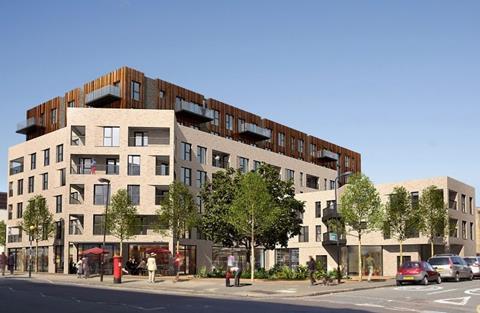Housebuilder Hill and retirement living developer Hanover recently announced plans to create a scheme with an unusually mixed target market in Newington Green, east London.

The Newington Gate development is aimed at two distinct groups: first-time buyers and renters of affordable housing over the age of 55.
It will comprise 72 homes – 32 for first-time buyers, 28 for affordable rent to people over the age of 55 and 12 for shared ownership.
So what are the advantages of what the developers are calling ‘multi-generational’ schemes and how will they ensure that the homes are fit for all?
Property Week spoke to Paul Jordan, regional director at Hill, to find out.
Why did you want to develop a multi-generational scheme? Have you done it before?
We have carried out a similar approach on a few schemes in the past. Mixed-tenure, multi-generational developments are in line with our social responsibilities. We want to provide a safe, inviting environment that removes some of the loneliness for the older generation and perhaps provides some guidance and mentoring for the younger generation, as well as encouraging respect between the different parts of the community.
Also, a lot of people want to downsize to release equity from their properties but don’t necessarily want to move into what is perceived to be care accommodation.
How does the partnership with Hanover work?
This is the third time Hill and Hanover have collaborated, having previously developed Woodside Square in Muswell Hill and Quadra in London Fields together. Hanover has brought land opportunities to us to utilise our private sale expertise to benefit the overall scheme, and it has also helped us to focus our attention on what older people want.
There has been a bit of trial and error and we have had to refine some of the elements of the design to make the schemes appeal to a wider audience.
Do you think there will be more multi-generational schemes in future?
It is a concept that has got legs in terms of providing a community that takes care of itself and where people look after each other. I get the impression that other developers are looking at the model, but I don’t know of many of our competitors that have made a commitment to it so we are ahead of the game.
Can it work outside London?
We are talking to Hanover about other potential schemes and we are keen to duplicate it elsewhere. We think the model could be taken outside London and we have already taken a similar approach – on schemes in Cambridge and Saffron Walden – outside the partnership with Hanover.
But there are certain restrictions – it does need to be an urban area, because if they are still mobile most of the older generation do not want to be constrained by being in a village environment. The schemes also need to be quite dense [to make them work financially].































No comments yet